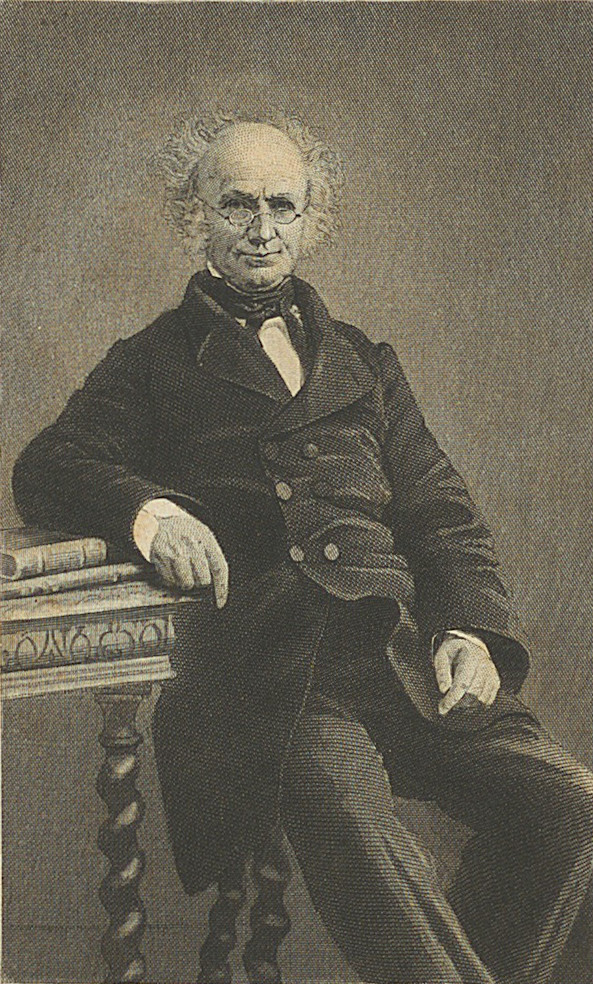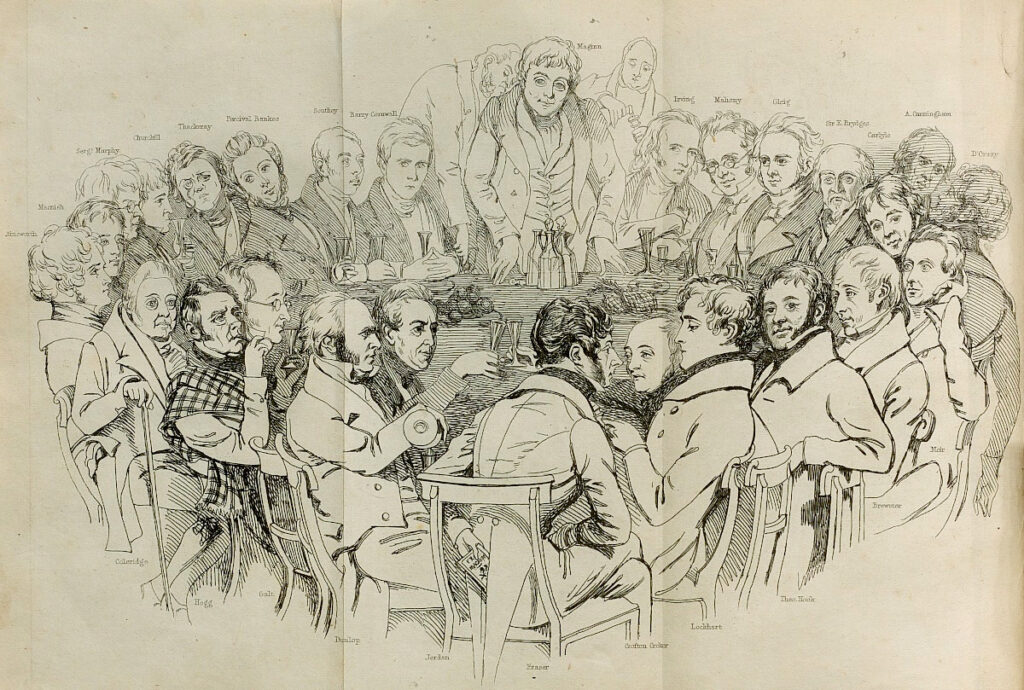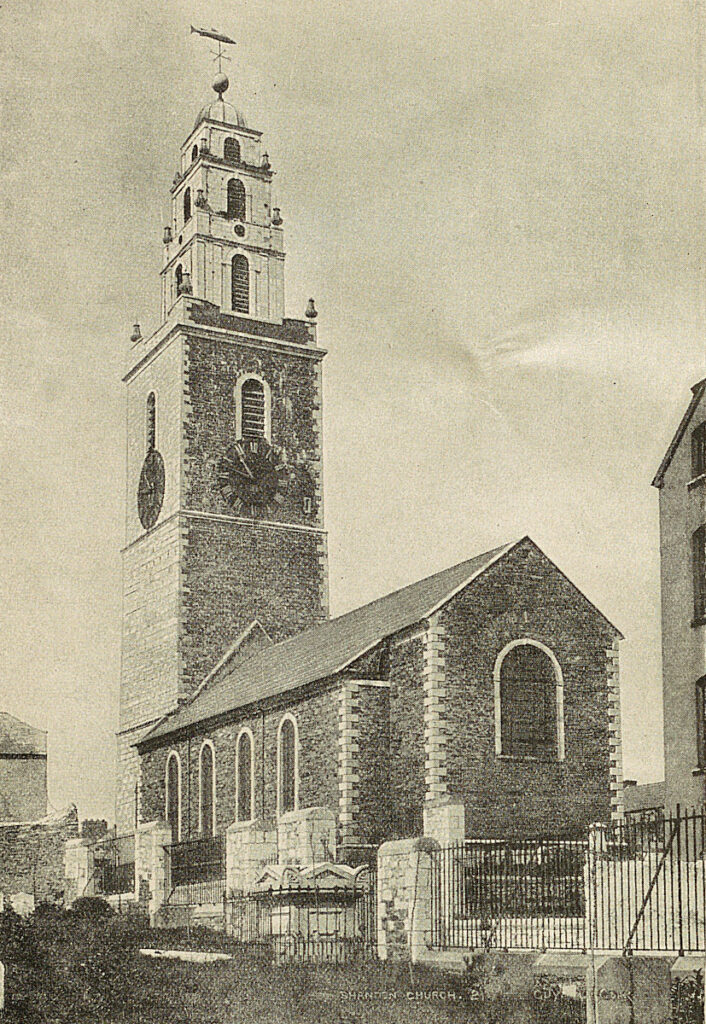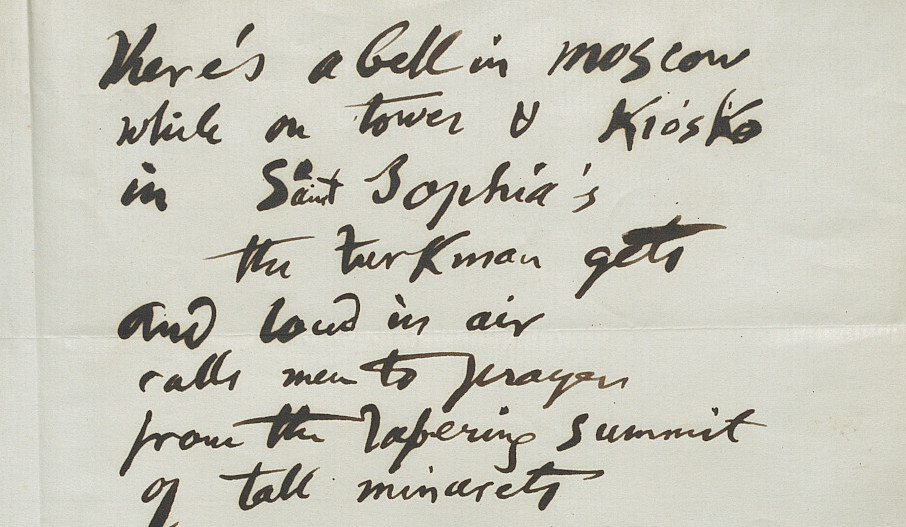“Ring Them Bells”: Father Prout and The Bells of Shandon
- John Rooney
- March 9, 2020
When listing archives even the smallest collections can draw you into the lives and works of the individuals who inhabit the material. Such was the case when I recently listed the Francis S. Mahony Collection. The collection consists of just five items, with the key item being an autographed final verse of the poem ‘The Bells of Shandon’ by the Cork born humourist and journalist Francis S. Mahony, better known as ‘Father Prout’.
Francis S. Mahony, aka Father Prout
Francis Sylvester Mahony (1804-1866) was born in Cork on 31 December 1804 to Martin Mahony, co-founder of the Blarney Woollen Mills, and his second wife, Mary Mahony. He attended Clongowes Wood College from 1815 to 1819 before continuing his education at Jesuit colleges in Amiens and Rome and beginning his novitiate at the Jesuit seminary in Paris. He returned to Clongowes in 1825 where he was appointed master of rhetoric but lost his position following a night of heavy drinking with his students. Despite his subsequent expulsion from the Jesuits, he was ordained as a priest in 1832 and appointed chaplain of the Cork Cholera Hospital during the outbreak of an epidemic in the city. However, tensions with his bishop led him to abandon his ordination and, in 1834, he moved to London where he became a leading contributor to Fraser’s Magazine (and later Bentley’s Miscellany) writing under the pseudonym ‘Father Prout’.

The character of Prout was named after a real Father Prout from Watergrasshill, Co. Cork who had died in 1830. In the essay ‘Dean Swift’s Madness’, Mahony describes his fictional Prout as the child of Jonathan Swift and Stella. His essays, later collected as The Reliques of Father Prout, contain fabricated biographical details of the life of Prout alongside his reflections on life and literature. At the time of their publication they were much admired for their sharp wit and entertaining style, with subjects of ridicule including Thomas Moore and Daniel O’Connell (the latter given the moniker ‘Dandeleon’). They secured a wide readership and established Mahony’s reputation, enabling him to mingle with many distinguished artists and literary figures of the day, including Thackery, Dickens and Maclise.

“The Bells of Shandon”
Interspersed throughout his essays are several original poems, together with translations of verse from (and into) various languages, including Latin, Greek and French. The best-known example of his poetic output is ‘The Bells of Shandon’, a nostalgic poem about Cork. The style of the poem is clearly captured in the first verse:
With deep affection and recollection
I oft times think of those Shandon bells
Whose sound so wild would In days of childhood
Fling round my cradle their magic spells,
On this I ponder, where’er I wander,
And thus grow fonder sweet Cork of thee
While thy bells of Shandon sound far more grand on
The pleasant waters of the river Lee.
The bells being referred to are those housed in the tower of the Church of St. Anne in Shandon on the north-side of the city of Cork. With its gold salmon weather vane and situation overlooking the River Lee, the tower is a noted landmark in the city. The poem appears in the essay ‘The Rogueries of Tom Moore’, a satirical take-down in which Prout accuses Moore of having plagiarised his work for the composition of ‘Evening Bells, a Petersburg Air’ during a visit to Cork.

The copy within the Francis S. Mahony Collection (see below) is an autographed final verse of the poem in Mahony’s hand. The printed version reads as follows:
There’s a bell in Moscow, while on tower and kiosk O!
In Saint Sophia the Turkman gets,
And loud in air calls men to prayer,
From the tapering summit of tall minarets;
Such empty phantom I freely grant them,
But there’s an anthem more dear to me-
‘Tis the bells of Shandon that sound so grand on
The pleasant waters of the river Lee.
However, a letter from Peter Burke accompanying the verse notes that the handwritten version corrects a common misprint, with the term “Kiosk, O !” in the first line corrected to “Kiosko”.

The poem remains the most enduring of Mahony’s work and has since become a popular song, a rendition of which can be listened to on website of the Irish Traditional Music Archive.
Mahony left London in 1837 to travel to the Continent. He was Rome correspondent for the Daily News from 1846 to 1858 before settling in Paris where he was correspondent for The Globe until his death in 1866. Following his death, his remains were brought to Cork where they were interred in the family vault in St. Anne’s Shandon Graveyard.
The Burke Connection
In terms of the provenance of the item, the collection contains four additional items unrelated to O’Mahony: two letters from Peter Burke (1811–1881) to a Miss Gould of Beaconsfield, and two letters from Sir John Bernard Burke (1814–1892) also to Miss Gould.
Peter Burke was an English barrister, serjeant-at-law, and writer. He was the son of John Burke, an Irish genealogist, and the original publisher of Burke’s Peerage. In the first of his letters, dated 10 November 1855, he refers to the enclosed “far-famed and exquisite lyric” which he had Mahony write for Miss Gould during a recent visit to Dublin (and notes Mahony’s correction). In both of his letters, the second dated 13 March 1860, he discusses his research into the life and work of the Irish politician and philosopher Edmund Burke, widely regarded as the father of modern conservatism. Peter Burke published two works on Edmund Burke: The Wisdom and Genius of the Right Hon. Edmund Burke in 1845 and The Public and Domestic Life of the Right Hon. Edmund Burke in 1853, as well as several works on legal matters.
Regarding the identity of Miss Gould, she appears to be one of the daughters of John Gould, Rector of the Beaconsfield Rectory in Buckinghamshire, with the letters including references to Peter Burke’s visits to the rectory and Edmund Burke’s burial and memorial at Beaconsfield. The collection ends on something of a melancholy note. The final two letters are from Peter’s brother, Sir John Bernard Burke, who took over publication of Burke’s Peerage (and related titles) following the death of their father. In his first letter, dated 18 August 1869, he informs Miss Gould of his brother’s illness. His second letter, dated 6 April 1879, tells that his brother is in the same state he has been for years, unable to leave his room or see anyone. It concludes: “I have however conveyed to him the kind remembrance you entertain of him, and those old times when he delighted to visit Beaconsfield.” Peter Burke died two years later, on 26 March 1881.
The complete descriptive list for the Francis S. Mahony Collection can now be accessed on the Archives Collection LibGuide at: https://libguides.ucc.ie/FrancisSMahonyCollection/Home
Bibliography
Mahony, Frances, The final reliques of Father Prout. (London: Chatto and Windus, 1876)
Mahony, Francis, The reliques of Father Prout. (London : James Fraser, 1836)
Mannin, Ethel, Two studies in integrity : Gerald Griffin and the Rev. Francis Mahony (“Father Prout”). (London : Jarrolds, [1954])
Moore, E., The bells of Shandon : with the annals of the Church of St Anne Shandon, Cork. (Cork : Printed by Guy & Co. Ltd, [ca. 1890])
